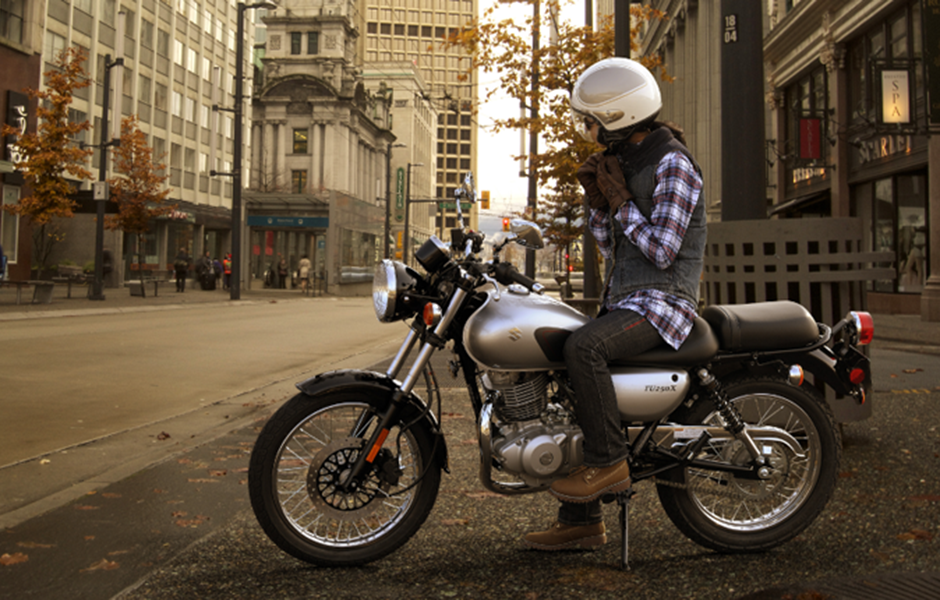Back in a simpler time, motorcycles were smaller, slower, and some would argue, more fun. Sure, cranking up 190 horsepower on the latest hyperbike is a thrill, but it’s not so useful when you want to buzz over to the store for some butter and beers or need to snake through stalled rush hour traffic.
For those kinds of riding duties, motorcycle makers used to offer a slew of small-displacement bikes that were also big enough for adults and came with lights, signals, a horn and a spot for a license plate. Let’s call them Little Big Bikes.
Popular models from way back when included the Honda CT bikes like the CT90 and CT110 (below), the Monkey and more. They were all too slow to ride on the freeway but they were just big and fast enough to haul a ton of stuff – plus roll your butt around the city.

It didn’t hurt that they got about a million (or often about 100) miles to the gallon, so operating costs were minimal. As you might imagine, Honda and other bike makers sold these lightweight work and play bikes by the boatload, and they continue to do so today in what we call “developing countries” where these tough little machines are chronically overloaded each day but soldier on anyway.
In the United State during the 1960s and 1970s, these friendly machines filled up college campuses and found a spot on the backs of motorhomes and campers everywhere. Best of all, they were easy to ride and low powered enough that it was pretty hard to get into trouble on one.
But as the horsepower wars spooled up in the U.S., it trickled down as well, and slowly but surely, the little city bikes (or ranch bike or farm bikes) disappeared from showrooms. Fortunately, enough were sold that you can still find them used, and while they remain inexpensive enough by today’s standards, you’ll be paying more now for a used one than they ever cost new. Funny how that happens.
Recently, Honda has rekindled the Little Big Bike movement with the Grom, a funny-named, $3,200 125cc machine that’s part scooter, part motorcycle and part dirt bike. And they have a hit on their hands.

The Grom is little, but like its grandparents, it’s still big enough for adults to ride in comfort, provided you’re not playing in the NBA or NFL. It has disc brakes for modern stopping power and since it’s a Honda, the stout little fuel-injected 125 single is peppy enough to entertain while still staying under yonder officer’s literal radar. And racing? Of course, there are now Grom racing leagues. Go get’ em!
If you want something with a bit more punch but still in the realm of Little Big Bikes, check out the Yamaha TW200. This bike has been around since the 1980s and is still sold today. It was just plain weird back when it debuted; now, used ones are hotly sought after since a new one is about $4,400. The TW (originally, it was called the “Trail Ways”) features a bit bigger 200cc powerplant, but it needs the extra power to turn the balloon-style tires that allow this tough customer to go pretty much anywhere.

Essentially an oversized mountain bike, the TW200 soaks up jeep trails and crumbling urban insfrastructure without a second thought. It’s also great on gas and has enough poke to haul a passenger around town or a lot of gear through the zombie apocalypse. If you live somewhere that gets a lot of rain (or even snow), the TW is a solid choice. It won’t get anywhere in a huge hurry, but rest assured, you’ll get there eventually, no matter where “there” is.
Suzuki is in the Little Big Bike game as well, although at 250cc, their $4,400 TU250X is the biggest of the bunch and in a pinch, could get you down a stretch of freeway, although that’s not its strongest suit. What is, though, is a great sense of style.
Looking much like a vintage bike but without all the vintage hassles, Suzuki should give the lovely TU250X a good name to go with its great looks. The Vinty? The City Slicker? Lovely Betty? Whatever it ends up being called, the TU250X is a great choice for any rider looking for a city ride with a bit more juice and a solid helping of style.

But Honda, Suzuki and Yamaha aren’t the only players bringing back the Little Big Bike. A sort of oddball outlier is the Sachs Madass, and yes, you read the name correctly. If there had been mopeds in Mad Max or Tron, it might have looked like the Madass, with some neon touches or spikes added. It features a minimalist frame that also holds the gas, dual disk brakes, dual HID-style headlights, and large-ish wheels and tires. It’s not clear if Sachs is still selling the Madass today, but if you check around at scooter shops or on Craigslist, there’s usually a few to be found, and they are worth finding.

Whichever Little Big Bike you choose, they all have the same things in common: a low price, manageable power, stellar gas mileage and a very high fun factor.
Photos courtesy Honda, Yamaha, Suzuki, Sachs and some adventurous folks on the Internet.






















